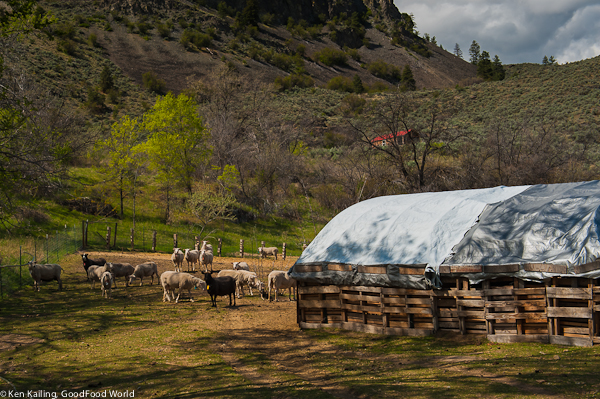(Take a virtual tour of Larkhaven Farm here.)
At Larkhaven Farmstead Cheeses, Clare Paris and her husband Sam Howell have been producing aged raw milk cheese for nearly 20 years and began marketing commercially about 5 years ago.
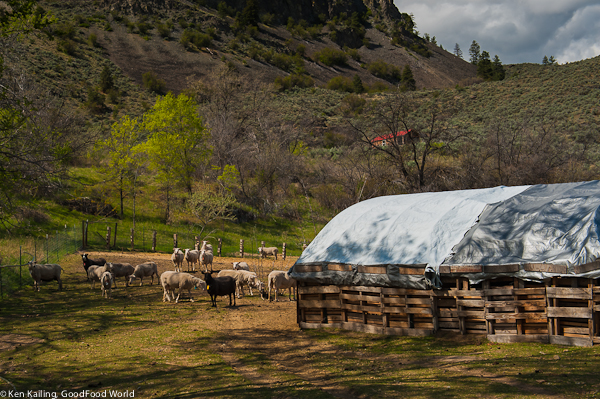
Today, Clare and her husband Sam are members of a very exclusive club! How exclusive? Let’s start with the dairy industry…
In 2007 (the most recent US Agricultural Census) there were 65,000 farms raising dairy cows and 9.2 million cows in those operations. Compare that with the number of dairy goat operations – 330,000 dairy goats were raised on 27,500 farms. At the same time, 31,000 farms raised 9 million sheep, almost all of them for meat or wool, very few for their milk.
North America doesn’t even warrant a dot on the map of global sheep milk production. The majority of sheep milk is produced in Europe, the Middle East, Northern Africa, and Eastern Asia.
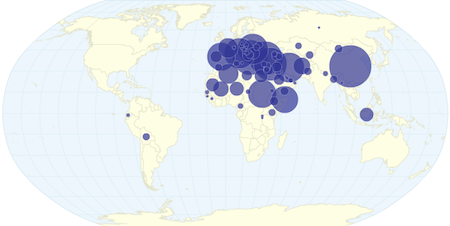
Artisan and Farmstead Cheesemakers
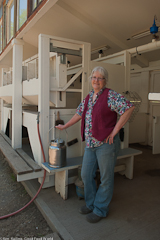
In recent years we have seen a resurgence of small-scale and farmhouse cheesemakers. Beginning in the 60s and 70s, the “Back to Nature” movement was the impetus, and by the late 70s and early 80s more specialty cheesemaking operations flourished.
Today there are hundreds of small-scale specialty and artisanal cheese factories in nearly every state of producing regional cheeses out of all types of milk in limited quantities. Some are farmstead, which means that the cheese is made on the farms where at least 50% of the milk is produced. (American Cheese Society)
However, according to the Agricultural Marketing Resource Center, which is partially funded by the USDA, there are approximately 100 sheep milk dairies in the US. Say that again? Yes, 100! And that’s an estimate because no one really counts them.
Milk and Cheese Production
Each sheep produces between 400 and 1,100 pounds of milk over a 220/240-day lactation period. Goats give an average of 1,800 to 2,400 pounds of milk during the animal’s 10-month lactation period; while cows average 15,000 to 37,500 pounds of milk over a similar 10-month period.
Because sheep milk has a higher fat content than either cow or goat milk, It takes only about 4-6 pounds of sheep milk to produce a pound of cheese where it takes 8-10 pound of cow or goat milk to produce the same amount.
Sheep’s milk is also higher in protein, carbohydrate, sugars, and calcium.
| Constituents | Unit | Sheep | Goat | Cow |
| Water | g | 83.0 | 88.9 | 87.8 |
| Protein | g | 5.4 | 3.1 | 3.2 |
| Fat | g | 6.0 | 3.5 | 3.9 |
| Carbohydrate | g | 5.1 | 4.4 | 4.8 |
| Sugars (Lactose) | g | 5.1 | 4.4 | 4.8 |
| Cholesterol | mg | 11 | 10 | 14 |
| Calcium | mg | 170 | 100 | 120 |
| Saturated fatty acids | g | 3.8 | 2.3 | 2.4 |
| Monounsaturated fatty acids | g | 1.5 | 0.8 | 1.1 |
| Polyunsaturated fatty acids | g | 0.3 | 0.1 | 0.1 |
Milk composition analysis, per 100 grams (Source: Wikipedia)
Making a Big Change
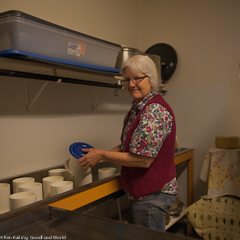
In the beginning, Clare made cheese from goat milk or a blend of goat and sheep milk, balancing a combined herd of goats/flock of sheep of around 50. As the market matured and more and more goat dairies opened up, the competition became greater. Last year, Clare and Sam made the decision to sell their goats and increase the size of their flock of sheep to 50.
Together they raise their pastured sheep thoughtfully and sustainably, feeding them grass or hay (depending on the season) and a small amount of local barley. The ewes are milked in a small, mechanized milking parlor, four at a time. And the raw milk is carried to a cozy cheese kitchen where Clare makes her cheeses. Adjacent to the kitchen is a temperature and humidity controlled “cave” in which the cheeses are aged.
Larkhaven Farmstead Cheeses are true farmstead cheeses – made on the farm from raw milk produced on the farm – and they reflect the seasonal variations in the pasture on which the animals graze. Every season the cheese flavors change very slightly, meaning that the cheese takes on a true sense of “terroir” or locality.
The Cheese Selection
While Clare and Sam have moved entirely to sheep milk production, they still have a number of cheeses available from goat milk or sheep and goat milk combined.
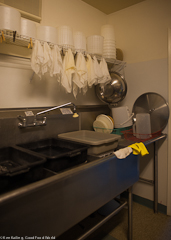
Shepherd’s Gem Gold (Made with sheep milk – aged 10-12 months))
A hard cheese with a dry, flaky texture and a characteristically full-bodied flavor. Shepherd’s Gem showcases the unique richness of sheep milk cheeses. It is a slow-aging cheese that matures similarly to cheddar, but the sharp accents never overwhelm the warm, sweet and nutty, satisfying flavor.
Cayuse Mountain Goat Reserve (Made with goat milk – aged 10 months)
A smooth-textured, semi-hard, natural-rind goat cheese developed for a small, local market and now more widely available. The flavor is mellow and balanced, yet is enjoyed even by those who thought they didn’t like goat cheese. Cayuse flavor develops quite early; its summer version is a good, medium-sharp cheese, while the reserve wheels, available later in the season, can be quite sharp.
Whitestone Aged Feta (Made with sheep and goat milk combined – aged 90 days)
Named after a local landmark, this firm-textured hard cheese is aged at least 90 days in a special brine. It is similar to Greek feta, but it’s not just a cheese to crumble on salads — the depth of flavor developed during aging makes it a stunning addition to the gourmet cheese plate.
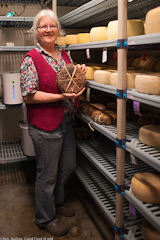
Full Moon (Made with sheep milk – aged 60-75 days)
The varied paste is creamy, with a mild yet adventurous flavor; the rind is covered with a soft white bloom.
Okanogan Maple Leaf (Made with sheep milk – aged 90 days)
Expect a semi-firm to semi-soft interior with lots of forest-floor earthiness and a variable paste.
Chopaka Rose (Made with sheep milk – aged 60-90 days)
This is a washed-rind table cheese made with ewe’s milk, taking advantage of the lush graze of spring and summer. Its robust flavors contrast beautifully with its complex texture. The cheese forms its rind with the aid of an orangey-rose-colored mold that enhances both the appearance and the flavor over the aging period.
Sinlahekin Blue (Made with sheep milk – aged 60-90 days)
Sinlahekin Blue (say sin-lah-HE-kin, just like it’s spelled) is made with pure, raw sheep milk and aged for a rich, blue flavor and random veins of roqueforti; creamy, yielding, sliceable, with a variable paste.
To Boldly Go
Small farmers and artisanal producers daily face – and overcome – many challenges. Long days, hard work and tough financial constraints are constant hurdles. And the high cost of creating a viable market for niche products is a problem that requires special skill.
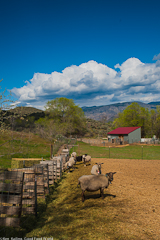
In the 1950s, Kraft was one of the first companies to produce “processed cheese food” and slowly destroyed small local cheese manufacturers across the country. Faced with a public that consumes huge amounts of “American Cheese” – processed cheese often made of a blend of Colby and Cheddar combined with a concoction of thickeners, emulsifiers, artificial colors, and artificial flavors – sold in blocks, spray cans, or packed in plastic-wrapped individual slices, Clare offers classic cheeses with unique flavors and textures.
It is clear with the growth of local, artisan, and farmstead cheesemaking that public tastes are shifting and that same public is beginning to understand, seek out, and enjoy carefully crafted cheeses. Like learning to enjoy good wine, eating good cheese is a sensory experience involving smell, taste, color, and texture. Selling direct to consumers at farmers markets, knocking on restaurant kitchen doors, and getting “up close and personal” with retail cheesemongers – these are the best ways to introduce sophisticated flavors to a “naïve” palate.
You might think that moving from a proven product like goat cheese that is recognized by consumers across the country to a relatively rare American-produced sheep milk cheese would be a risky step. Or on the other hand, you could consider it a smart creative way to claim a new niche and re-establish a market.
Small producers of artisan farmstead cheeses, like Clare and Sam, are the true pioneers of the growing good food movement. We salute them!
________________________________________
(Full disclosure: GoodFood World provides outsourced business and marketing services to socially-innovative businesses and grass-roots “good food” producers and processors like Larkhaven Farmstead Cheeses.)

